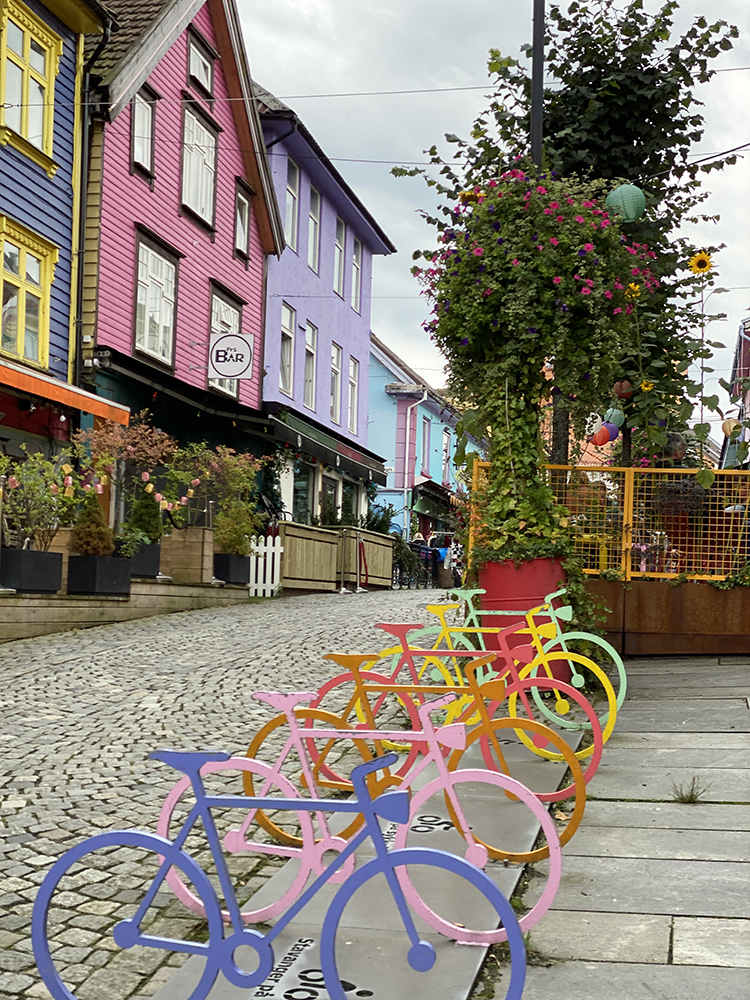Every other year, the Cyclists' Association awards the title of Norway's best cycling city based on a national Cycling Survey. In 2024, Stavanger won the prize for the second time in a row. But what does it take to remain the best at cycling?
Blog post
The blogpost is written by

In the survey, residents rate their city between 1-5 in categories such as general satisfaction, safety, security, accessibility, and the prioritization of cycling in the municipality. The average score is then ranked for the 59 municipalities that meet the response rate requirements (i.e., between 0.1% and 0.25%). With an average score of 3.5 (based on 195 responses), Stavanger lands in first place nationally. Stavanger excels particularly in well-developed and safe cycling infrastructure, such as a continuous network of bike paths and lighting. The population also feels that the municipality prioritizes cycling.
But how is cycling really doing in Stavanger? The National Travel Survey 2022 shows a cycling share of 10% in Stavanger municipality, the highest among all urban municipalities in Norway. In the Nord-Jæren region, 7% cycle, and 13% when looking only at work commutes.
This is not bad compared to other Norwegian cities and regions. In Oslo and Trondheim, 9% cycle, and in Bergen, only 4%. Compared to major European cities, the average cycling share is estimated to be around 8%. (Note that cycling shares are generally significantly higher in Northern Europe than in Southern Europe.)
However, looking at Utrecht (NL), Münster (DE), or Antwerp (BE) – "the world's most bicycle-friendly cities" – we find cycling shares of 51%, 39%, and 25%, respectively. So Norway's best cycling city is far from the top tier.
What's worse, Stavanger's own Cycling Survey shows that the cycling share has dropped by 3% from 2023 to 2024. A recent survey with 1007 residents in Nord-Jæren also shows that the proportion cycling to work daily has decreased. The same negative trend can be observed in attitudes towards cycling. Fewer people like to cycle or identify as cyclists than in 2019. More people find cycling stressful. And fewer consider the cycling infrastructure to be good or think that cycling can be a good travel alternative.
For people to cycle, it must be perceived as easy, safe, and efficient. Several surveys also point out that personal health benefits and the opportunity for daily exercise motivate people to cycle. According to Stavanger's cycling survey, one of the biggest barriers is not travel time, distance, or physical exertion (nor the weather), but that people prefer the car.
This is despite Stavanger being home to the country's most expensive cycling infrastructure, the Sykkelstamvegen, and a massive cycling initiative. If Stavanger is to top the list of cycling cities in 2026, it is important to work purposefully – both to promote cycling and to reduce barriers. Here are some important points to remember:
- The car outcompetes the bicycle in most aspects: travel time, comfort, weather protection, et cetera. The exceptions are costs and health benefits. If cars have free speed and park for free right outside the destination, this will remain the case.
- The e-bike reduces travel time and effort, making cycling a real alternative to cars and buses.
- It must be safe to cycle. Traffic safety is a fundamental need, especially where traffic areas are shared with other road users. Continuous and clear infrastructure is important.
- How the infrastructure is used also contributes to safety and comfort. Conflicts or dangerous situations with pedestrians, drivers, and other cyclists reduce attractiveness. Clear rules for the use of bike and pedestrian paths, crosswalks, etc., are important. Prioritizing bicycles over cars sends a clear signal.
- It is important to be able to park the bike – safely and near the destination! To make cycling attractive, people must be confident that the bike can be parked securely. Preferably closer to the main entrance than car parking. (Dry parking is a bonus).
- Early habits … Cycling can increase children's range of action, autonomy, and traffic experience. If the city is safe enough for children to cycle, it is a good city for everyone to cycle in.
- We know too little about what makes people start and continue cycling. Targeted and local research should be a prerequisite for further cycling initiatives in Norway's best cycling city!
